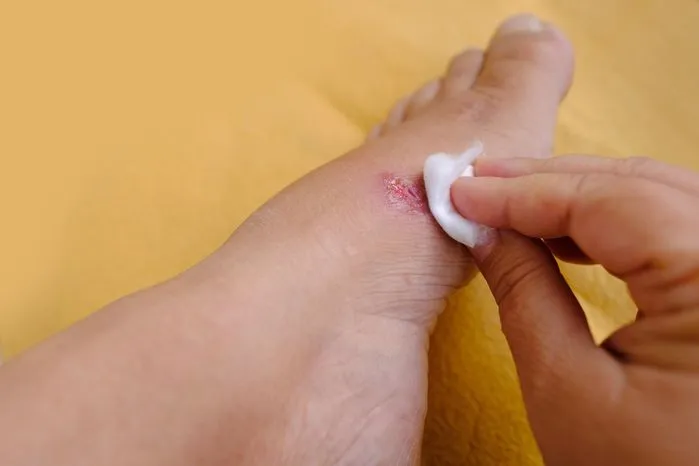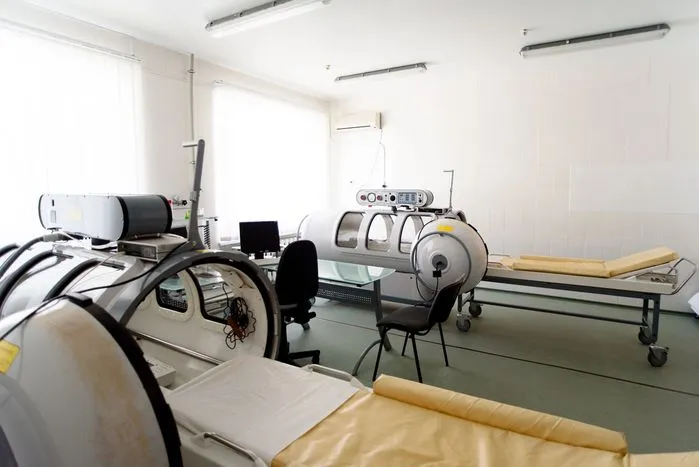Just as a spotless engine wards off wear and tear, a clean wound helps prevent infection. Then there is nutrition. Your body loves nutrients for skin repair. What's next? Well, rest is crucial. Just as machines require downtime for repairs, rest helps your body accelerate healing processes.
Key Takeaways
- Before bedtime, thoroughly cleanse and disinfect them to avert infection.
- Consider ointments and other remedies to achieve this goal.
- Cover the wound to achieve this target. There are various over-the-counter options for this task.
- Another thing to consider is the food you eat. A variety in what you eat helps a lot in your recovery.
- Another thing to consider is getting enough rest. This is one of the magical powers that people have that helps with their recovery.
Understanding the Body's Healing Process
Our bodies initiate a fascinating, intricate healing process, performing complex tasks. This biological performance starts with an immune response, a crucial defense mechanism that promptly identifies and reacts to wounds. Your defense system signals this response, releasing chemicals to shield the wound against infections and prompting inflammation to seclude the afflicted area.
At the same time, platelets in the blood become activated, and they construct a plug to halt further bleeding and initiate the repair process. Fibrin, a protein, aids these platelets, forming a mesh-like structure, and creating a clot that safeguards the wound.
Under this protective covering, cellular regeneration's magic unfolds. Your body produces collagen, a protein that gives structure and strength to healing tissue, assisting in the generation of new skin cells at an accelerated rate to replace damaged ones.
Lastly, the immune response involves dispatching white blood cells to the wound site, ensuring the elimination of any lingering bacteria.
Proper Cleaning Techniques for Wounds
Understanding the body's healing process indicates that effective treatment strategies for wounds notably influence healing speed and success. The importance lies in proper wound cleaning as an initial step. This part of wound hygiene minimizes infection risk, which might otherwise slow healing and spur additional complications.
Techniques for cleaning wounds entail suitable cleaning solutions coupled with meticulous application. Here are three essential steps:
1. Carefully cleanse the wound using warm water paired with mild soap, ensuring the removal of any present dirt or debris.
2. Employ a wound-specific cleaning solution, such as hydrogen peroxide or saline solution.
3. Dry the wound gently with a clean cloth or bandage.
"Cleanse thoroughly, nourish wisely, and rest abundantly. Supporting your body's natural healing powers with proper care—inside and out—transforms your recovery process into a proactive journey. At TheWoundPros.com, we believe in empowering you to heal smarter, not harder."
Nurturing Your Skin With Nutrition
Nutrition's role in wound healing is noteworthy. Foods rich in nutrients speed up the healing of wounds, cuts, or scratches. Consuming a diet well balanced with proteins, vitamins, and minerals is critical.
Vitamins such as A and C are highly important because they help produce collagen, which forms the foundation of new skin tissue. Zinc, a vital mineral, supports cell growth and immune function, both of which are important for wound healing.
Hydration is another key aspect that needs attention. Hydration keeps your skin elastic, reducing chances of drying out, which makes it more prone to cuts or scratches.
Topical Treatments to Aid Healing
Antimicrobial ointments or natural remedies supply direct healing components, facilitating faster recovery. Antimicrobial Ointments are crucial for keeping infections at bay, these ointments (e.g., Neosporin) contain bacteria-fighting antibiotics. Also, various nature-derived substances contribute to wound recovery. For example, Aloe vera, known for its anti-inflammatory properties, soothes while aiding skin repair. Hydrogel dressings also offer moisture to wounds, encouraging healing and reducing discomfort.
Importance of Rest and Recovery
Resting and recovering play crucial roles in wound healing, surpassing the significance of nutrition, hydration, or topical treatments. This simple yet vital aspect significantly influences our body's self-repair capabilities.
Healing benefits from rest are numerous. During rest, our bodies enter a repair state, diverting energy towards mending damaged tissues. This repair state, also referred to as an anabolic state, intensifies during slumber, emphasizing sleep's role in wound recovery.
Supporting Facts and Statistics
According to the Centers for Disease Control and Prevention, in 2004, more than 10% of nursing home residents suffered from stage 2 pressure ulcers.
The National Institutes of Health (NIH) cited that Vitamin C is crucial for collagen biosynthesis, an essential component of connective tissue that plays a vital role in wound healing.
The NIH emphasized that Zinc is involved in numerous aspects of cellular metabolism, including protein and DNA synthesis, which are critical for wound healing and cell division.
The Wound Pros’ Opinion on How to Effectively Help Wounds Cuts and Scratches Heal Faster Overnight
Recognizing your body's healing process, implementing effective wound cleaning methods, feeding your skin, applying potent topical treatments, and giving importance to rest quickens wound healing overnight. At TheWoundPros.com, we believe that such a strategy guarantees excellent health and swift recovery. Vigilance for infection signs or healing delay is crucial and getting help from specialists is a necessity. We support that harnessing your body's innate healing abilities, paired with proactive care, paves the way for a rapid recovery from wounds, cuts, or scratches.
Frequently Asked Questions
How do you make cuts heal faster overnight?
To make cuts heal faster overnight, clean the area with mild soap and warm water, apply a thin layer of antibiotic ointment, and cover it with a sterile bandage. Changing the bandage daily helps prevent infection and promotes healing. Also, keep the area elevated if possible to reduce swelling.
How do you get rid of cuts asap?
To get rid of cuts as soon as possible, start by cleaning the wound with clean water and soap. Apply an antibiotic ointment and cover it with a sterile bandage. It is crucial to change the bandage daily and keep the wound clean and dry.
Do cuts heal faster with Vaseline?
Vaseline helps cuts heal faster by keeping them moist. The moisture prevents the wound from drying out and forming a scab, which would slow the healing process. However, it is essential to clean the wound before applying Vaseline and cover it with a bandage.
How to heal broken skin overnight?
To heal broken skin overnight, gently wash the area with mild soap and water, then apply a moisturizing cream or petroleum jelly to protect the skin and promote healing. Cover it with a bandage overnight to keep it clean and protected.
What can speed up wound healing?
Proper nutrition, good hygiene, and maintaining a moist wound environment can speed up wound healing. Foods rich in protein, vitamin C, and zinc play a vital role in wound healing. Applying a topical antibiotic ointment and keeping the wound covered can also expedite the process.
Does Vaseline help scars go away?
Vaseline helps reduce the appearance of scars by keeping the skin moisturized. While it cannot completely make scars disappear, it can help to minimize their appearance over time.
Do cuts heal faster dry or moist?
Cuts generally heal faster in a moist environment because this prevents a hard scab from forming, which could delay the healing process. Keeping the wound covered and applying an antibiotic ointment help maintain this moisture.
What to drink to heal wounds faster?
Drinking plenty of water helps hydrate your body and keep your skin moisturized, promoting faster wound healing. Additionally, consuming beverages rich in protein and vitamins, such as milk or orange juice, can also accelerate the healing process.
Do cuts heal faster covered or open?
Cuts typically heal faster when covered because a bandage protects the wound from bacteria and debris that could cause an infection. Keeping the wound covered also maintains a moist environment, which promotes faster healing.
What does a sepsis scab look like?
A sepsis scab often looks different from a regular healing scab. It may be larger, more painful, and have a yellow or greenish discharge. Additionally, the area around the scab may be swollen, red, and warm to the touch, indicating an infection.
Do cuts heal immediately?
Cuts do not heal immediately. The healing process involves several stages, including clotting, inflammation, tissue growth, and remodeling. Each stage is crucial and can take anywhere from a few days to weeks, depending on the severity of the cut.
Is neosporin good for cuts?
Neosporin is good for cuts as it contains antibiotics that help prevent infection. By applying Neosporin and covering the cut with a bandage, you can promote faster healing and reduce the risk of scarring.




.webp)

.avif)